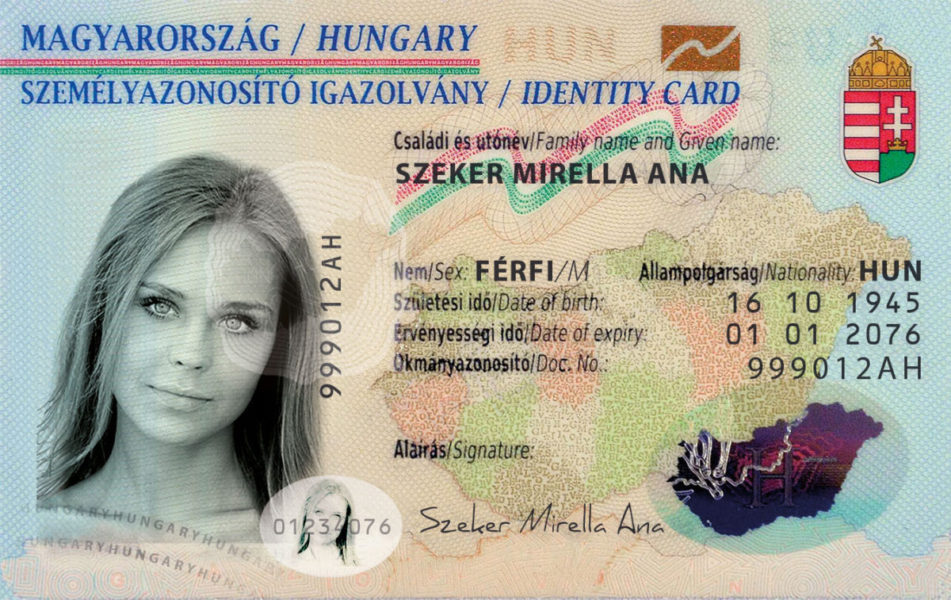The Hungarian ID card, known as “Személyi Igazolvány” in Hungarian, is an official identification document issued by the Hungarian Ministry of Interior. It serves as the primary form of identification for Hungarian citizens, enabling them to prove their identity, access various services, and travel within the European Union (EU) and certain other countries.
Features of the Hungarian ID Card:
- Personal Information:
- Full Name: The card includes the holder’s full legal name.
- Date and Place of Birth: The holder’s birthdate and place of birth are listed.
- Photograph: A recent passport-sized photo of the holder is featured on the card.
- Signature: The holder’s signature is displayed.
- Gender: The holder’s gender is indicated.
- Nationality: The card states the holder’s nationality.
- Card Details:
- ID Number: Each card has a unique identification number.
- Document Number: A unique number assigned to the ID card itself.
- Issue and Expiry Date: The dates when the card was issued and when it will expire are clearly stated.
- Issuing Authority: The name of the authority that issued the card is mentioned.
- Security Features:
- Holograms: Holographic elements are included to prevent counterfeiting.
- Microprinting: Tiny, difficult-to-reproduce text is used for added security.
- Barcode/QR Code: A barcode or QR code containing encoded information about the holder and the card is often included.
- Watermarks: Watermark designs enhance the authenticity and security of the document.
- Special Printing Techniques: Various printing techniques and inks are used to prevent forgery.
- Optically Variable Ink: Ink that changes color when viewed from different angles is used for added security.
- Laser Engraving: Some elements may be engraved with a laser to provide a tactile feature that is hard to replicate.
- Magnetic Strip or Chip: Some cards include a magnetic strip or chip to store biometric data and other information securely.
- Transparent Window: Some cards feature a transparent window with engraved details as an additional security measure.
- Additional Information:
- Residential Address: The holder’s residential address is sometimes included on the card or associated with it in a digital format.
- Digital Signature: Some modern cards include a digital signature for secure electronic identification and transactions.
- Machine-Readable Zone (MRZ): The card includes an MRZ to facilitate automated reading and verification at borders and other checkpoints.
- Emergency Contact Information: Some cards may include information for emergency contact.
- Validity Period: The standard validity period for ID cards varies, typically being valid for 10 years for adults and shorter periods for minors and elderly citizens.
Uses:
- Proof of Identity: The ID card serves as the primary form of identification within Hungary and the EU.
- Access to Services: It allows the holder to access various public and private services, such as banking, healthcare, and voting.
- Travel Document: The card can be used as a travel document within the EU and certain other countries that recognize it.
- Electronic Identification: Some cards include features for secure electronic identification and digital signatures for online transactions and e-government services.
The Hungarian ID card is an essential document for citizens, providing secure and reliable identification and enabling access to a wide range of services and travel opportunities. For the most accurate and detailed information, referring to official Hungarian governmental sources or specific documentation would provide comprehensive details on the card and its features.







Reviews
There are no reviews yet.